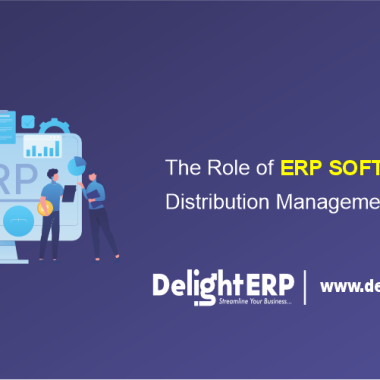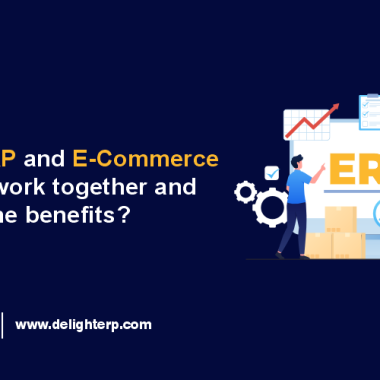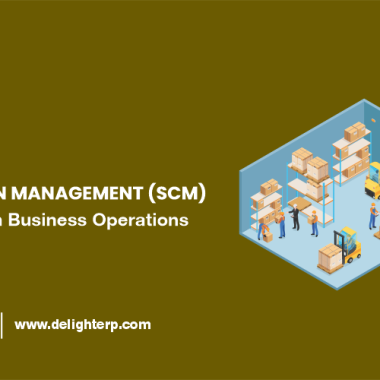Introduction of ERP Implementation
In an organization, various important tasks need to be taken care of, which we call a business process and all this business process is important while doing ERP Implementation. These include accounting, management of finance, handling leads, human resource, and development, project management, etc.
Generally, if the organization is new and has a less number of employees, all the above-mentioned processes are either handled manually or different small-sized modules are incorporated to carry out these processes individually. Hence, the biggest problem faced here is the flow of data and its security.
Also, the same data is kept in different modules, creating multiple copies of the same across the organization. So, there is a need for software or a platform that acts as a standalone solution to all business processes and also acts as central storage for data so that the employees of the organization can retrieve and work from it.
To integrate the business processes in an organization, a software module has been developed known as Enterprise Resource Planning, abbreviated as ERP. This module automates the main activities and tasks of an organization which were done initially manually.
It is a platform for standardizing, simplifying, and integrating the mandatory and important business processes like handling the financial transactions, management of human resources, procure and distribution, etc.
Also, it is a less expensive solution that increases the efficiency of the employees and hence the whole organization and hence replacing older systems in a package that helps ease the complicated process involved in an organization.
The features and functions involved in ERP software are:
- Helps in solving integrating the complicated business process under one package.
- Helps in improving the financial planning process.
- Gives an accurate analysis of data for decision making.
- Helps in extending the business processes to a wider network and domain, also maintaining healthy relationships with clients and customers.
- Improves the process of governance by automation of operational activities.
- Prevents the security breaches and data leak possibilities by authenticating the users utilizing the ERP.
- Prepares the organizational processes as per the latest trends and technologies.
- The handling of customer data is done efficiently and hence increases the number of the customer with an increase in the lead conversion ratio.
Areas covered by ERP to simplify the business activities are as follows:
- Finance: Keeps the records of the financial data and transactions.
- Human Resource and Development: handles the employee data
- CRM: the customer relationship management module handles the customer data and manages the relationship between the organization and the clients or customers.
- Sales: Handles the placement of orders, its successful delivery, shipment processing, and invoicing.
- Inventory: keeps a track of the products present in the warehouse and the inventory, reminds if there is a need to purchase the same, etc.
- Manufacturing and Production: All the activities related to the planning of the production of goods are handled here.
- Managing Supply Chain: Controls the supplies and tracks the product movement, storage, and management.
- Business Intelligence: Data analytics to arrive at some conclusion or the decision-making process.
Get detailed information about the above features of ERP software.
In the upcoming sections, we shall discuss the need for ERP and the steps for a successful implementation of ERP in an organization.
Why and When ERP Implementation is required?
To manage all the business activities with automation, the organizations must decide on implementing ERP software, as it can manage a large number of complex operations of the organizations easily in less amount of time required.
Now, one might wonder, that the ERP is advantageous to the organization in many ways while making the efforts of the employees easy, but how? So let us have a glimpse of the reasons why the organizations should decide on deploying an ERP:
1. Fruitful investment of ERP Implementation
ERP packages, though they are not so less costly, does not drastically increase the expenditure of the organization or adversely affect the company budget.
As mentioned above, if ERP is not implemented, either employee manages all tasks manually or go for different modules for each department. Hence, the cost of these modules in total might increase the overall investment, sometimes even more than the cost of deploying the ERP.
Hence, we can call the deployment of ERP a fruitful investment, as it saves more time, effort, and overall cost of deploying in an organization.
2. Integrated Modules:
Different ERP packages come with varying features and functionalities as they are provided by the different ERP software provider company. But, the most important functionality, sharing and modifying of data, along with secure access to the same, is covered in all packages. Also, all the areas covered by the ERP system can access the data from a single point of access, instead of making individual copies of the data.
3. Reports for Business Intelligence:
You can generate all types of analytical and survey reports from the ERP, along with the finance and transaction reports, which would be helpful in the further decision-making process in an organization.
4. Increase productivity after ERP Implementation
As the tasks and activities are now automated, one can focus on making the business productive, and hence, ends up increasing self productivity as well as for the organization too.
5. More number of satisfied customers:
Various implementations of marketing strategies, which can help in effective lead generation, as well as more customer engagement with the business, can be possible in ERP. More is customer engagement and loyalty, more is the customer satisfaction.
6. Managing inventory and production process:
The system is useful in tracking the stock present in the warehouse, categorizes it into active stock or deadstock, reminds for purchasing or importing new stock, etc. as a part of the inventory management module.
Also, the planning of production, raw material required, cost of purchasing the raw material, meeting the deadlines of delivery, etc. can be managed by the ERP.
7. Security:
Data stored in the ERP can be used by the employees of ERP only. They are provided with the identity and passwords for authenticating themselves to use the ERP system. In this way, we can call ERP a safe and secure solution to store the company’s data.
8. Expansion of the business scope:
Add the information about your new business in your existing ERP software and you need to be least concerned about the new processes to be carried out from scratch.
9. Increases efficiency by ERP Implementation
With the help of the ERP system, there is a lesser number of chances of errors as compared to the occurrence of errors by manual efforts.
10. Managing the performance:
Using the ERP software, the overall performance of the company, departments, individual employees, etc. can be measured as and when required.
So these were some of the reasons to deploy the ERP in an organization.
Now, how would you know it is the right time to implement an ERP in the organization? Here is a brief for the same:
- When the manual workload has increased drastically and became uncontrollable.
- There are complexities in implementing some complex business processes manually.
- A large amount of data need to be handled
- Delay in grabbing the opportunities.
Also Read: What Is Supply Chain Management And Its Importance
In this section, we came across the reasons to implement the ERP and also saw the scenario when to give thumbs up to ERP implementation. Now let us see how ERP is implemented in the next section.
Top 10 Steps for Successful ERP Implementation:
Given below are the steps to be followed for a successful implementation of ERP:
1. Identification of the problems faced, which may lead to the decision of the implementation of the ERP in an organization.
2. Defining the needs of the functionalities and features to be included in the ERP system, considering the cost and the complexity of the software keeping in mind.
3. Evaluation of the ERP package from a large number of options available in the market, based on the features required, cost, and the ability of the software for customization.
4. Migration of the data to the ERP once it is deployed in the organization.
5. The platform and the environment of the system in which the software needs to be deployed are checked thereafter.
6. Customizing the purchased software if the requirement of the ERP changes according to the changing market scenario and the size of the organization. Instead of opting for the whole new package of ERP containing new features, it would be a better solution to customize the existing one.
7. Managing the drastic change and converting the manual tasks into automated ones is also important as the employees are being used to accomplish all the tasks manually and now the system has been introduced to automate all the tasks. Hence proper training needs to be given to the employees.
8. Transferring the technology, as mentioned earlier is important as the ERP system should be compatible with the system in which it is deployed.
9. Project management and testing procedure for assuring the complete and successful implementation of the ERP software in the organization.
10. Getting it live so that all the employees can take advantage of the system by utilizing its maximum number of features is the last step to follow. Also, in case there is an issue, the employees are well trained to solve it, and if it still exists, contact the customer support of the company who had developed the ERP software.
Also Read: How ERP Provides Robust Business Management Facility
CONCLUSION:
In the above blog, we came across the introduction about the ERP, its need, and also the steps for implementing it successfully in your organization. I hope the information helps!
Thank You For Reading!!!




